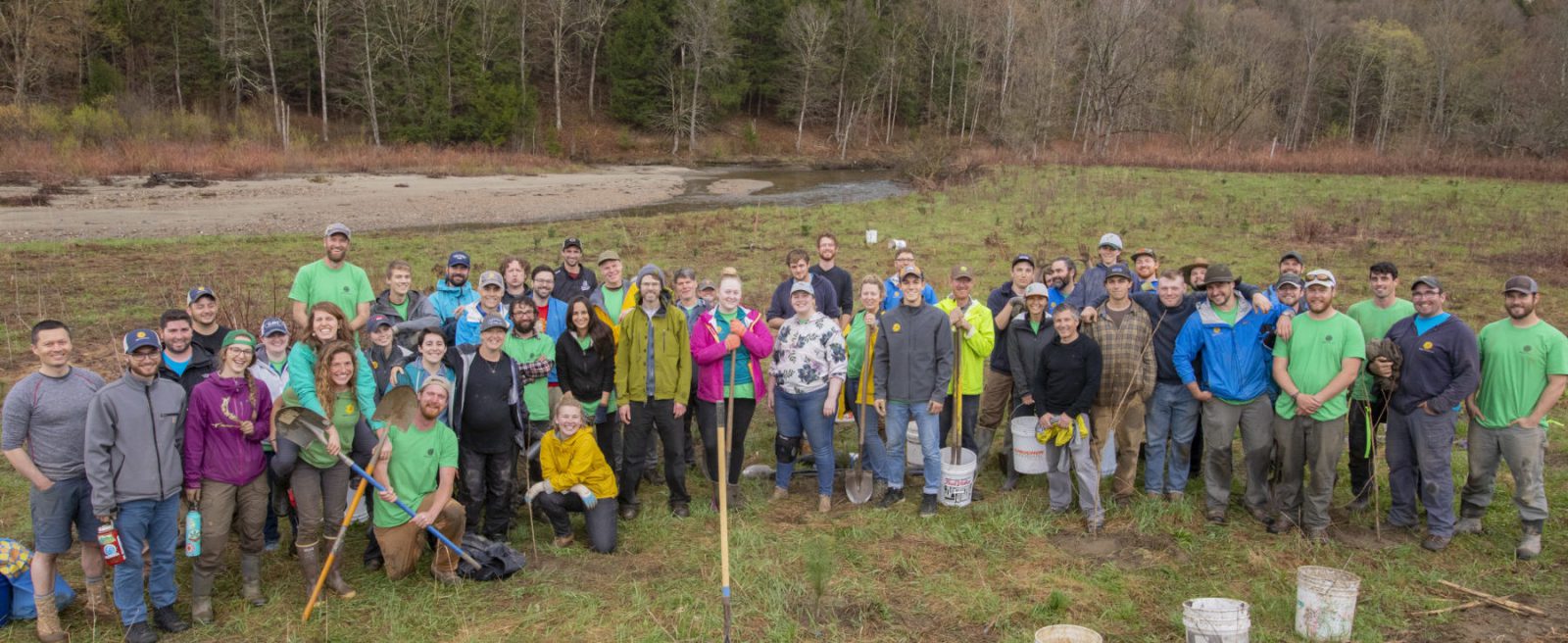On May 7, SunCommoners left our desks and job sites around the state, to spend the afternoon planting trees along the banks of the Winooski River. Why do that?
Sometimes when a fellow Vermonter asks us to install rooftop solar, we have to tell them: “To make solar work at your home, you’re going to have to cut down that tree shading your roof.” And over time, these trees add up. Even though the average solar system offsets about 50 times more carbon than a single tree would in its lifetime, we still miss those trees. So we decided to give back.
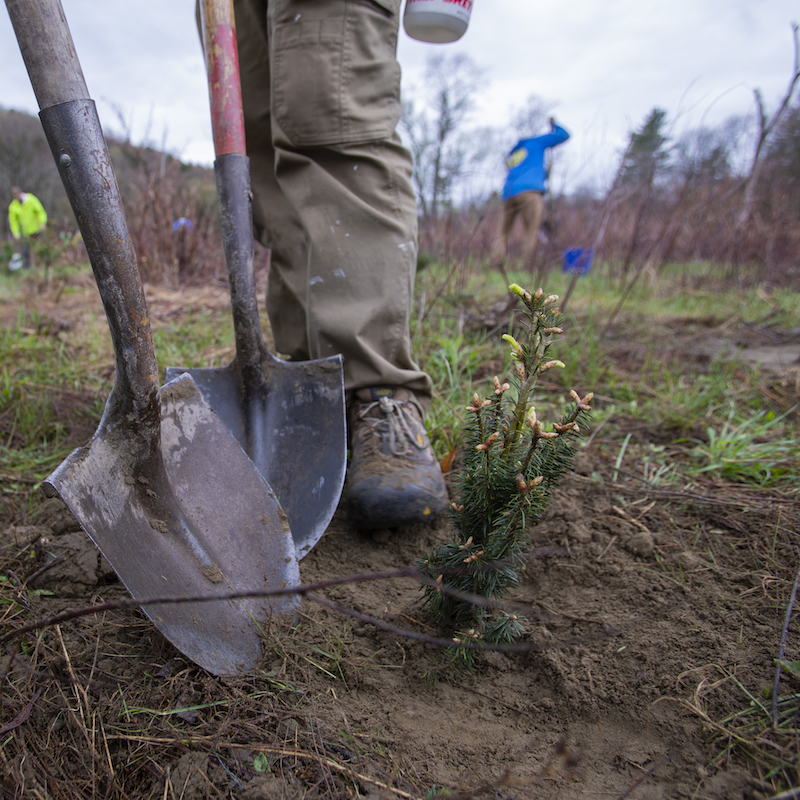

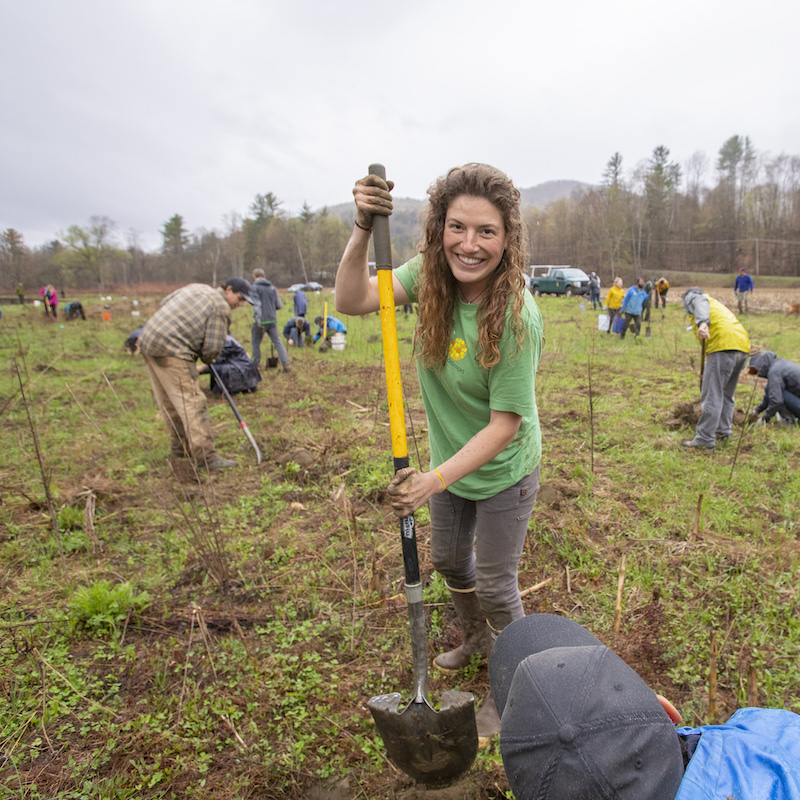

We worked with the Friends of the Winooski River (FWR) to plant native species along vulnerable riverbanks in Waterbury and Stowe. Due to deforestation in some places, there are no roots to hold the soil along the river in place, causing several feet of erosion per year!
It was a perfect partnership: The FWR needed help shoring up the riverbanks as quickly as possible and we needed to plant some trees.
Read their Open Letter below to learn more about the ecological benefits of planting trees.
Native Trees planted:
Shrub Willow, Silky Dogwood, Cottonwood, Nannyberry, Box Elder, Chokecherry, Tamarack, White Pine, Balsam Poplar, Staghorn Sumac, Elderberry, Balsam Fir, Red Maple, Sugar Maple
It seems like we did a good job!
We always support the involvement of volunteers for education and community engagement, but historically we have found them to reduce the pace of work instead of the other way around. From what our crew has said, the [SunCommon] volunteers were a different breed! If we didn’t already have a solar array, we’d be calling SunCommon.
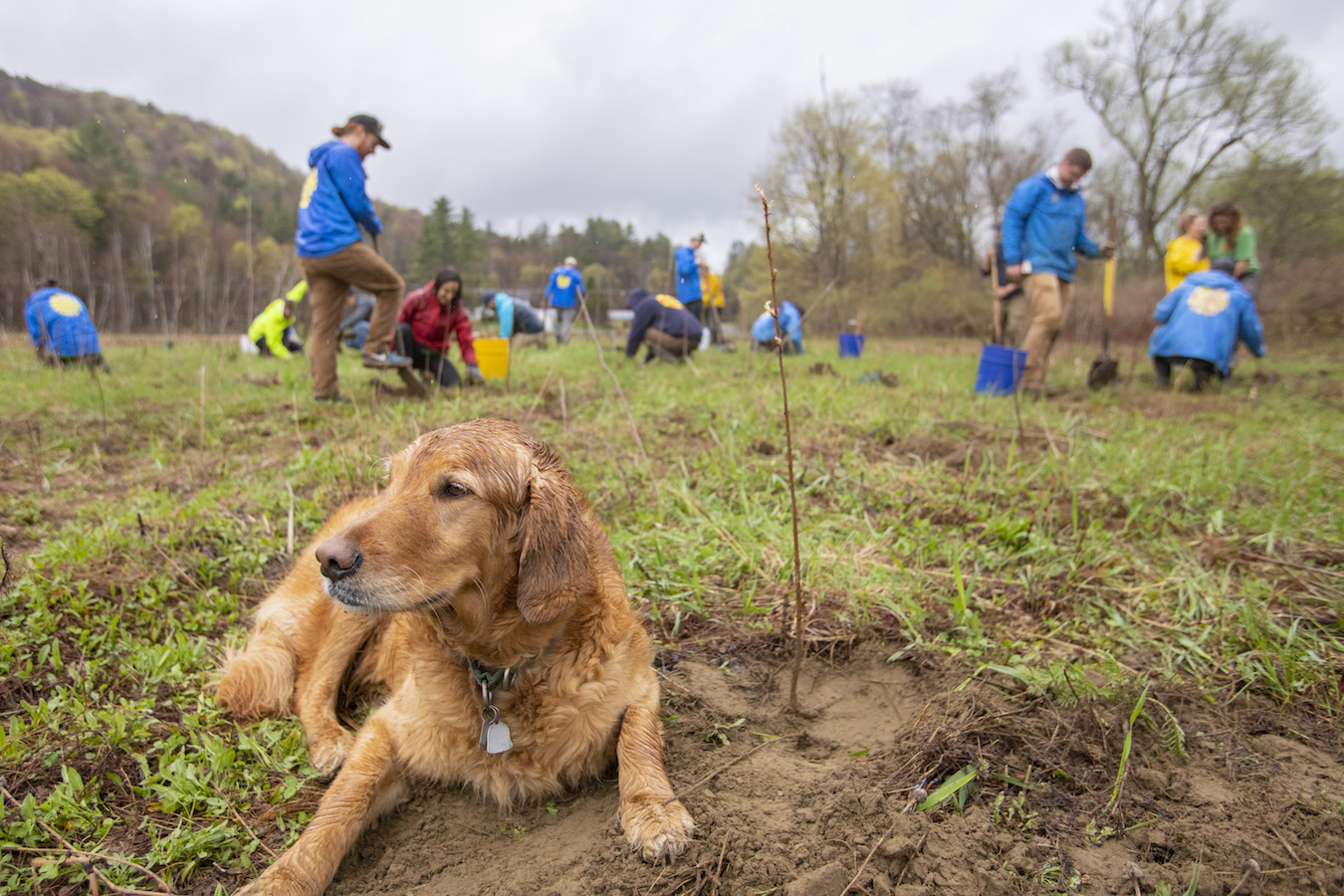

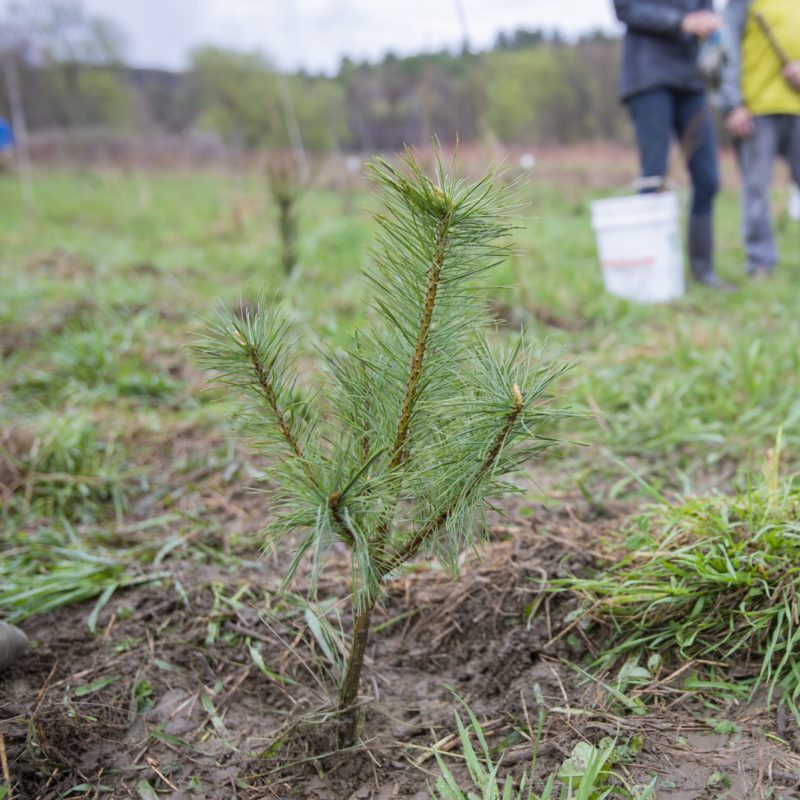

Did you know planting trees helps fish too?
Will Eldridge, aquatic habitat biologist at the Vermont Fish & Wildlife Department, explains:
It’s super important for the fish to have a forested riparian area. The trees around the stream provide a number of benefits: The roots help stabilize the bank; they help slow down erosion; keep sediment out of the rivers. They also, when they grow big, help shade the river, which is important for cold-water species like trout. They also can filter water and nutrients flowing over the land, like fertilizer and whatnot from the farm field, they can prevent that from entering the river. They also, when the trees fall in, they can provide habitat for fish and wildlife. So the trees actually become structures that fish will hide under. The leaves also provide food for bugs which the fish end up eating. So basically, as we like to say in the fisheries department, “fish grow on trees.”
An Open Letter from the Friends of the Winooski River
Dear Friends (of the Winooski River),
It’s no secret that Lake Champlain’s healthy ecosystem is vulnerable to impacts of those of us living, working and farming in its surrounding communities. Much of this comes as a result of the surplus sediment, toxins and also nutrients flowing into it from contributing rivers, such as the Winooski.
The Winooski watershed — all of the land area where water drains into the Winooski River — has the largest land area of any watershed in Vermont, home to about one quarter of the state’s population, covering all or part of more than 30 cities and towns. Friends of the Winooski River connects watershed residents with opportunities to spend time enjoying and restoring nature. One way to do that is to plant wide bands or buffers of native trees and shrubs along streams.
Planting trees and shrubs along streams provides a myriad of benefits!
- Trees and shrubs along streams help to slow rain as it flows over the land, which helps to maintain stable streambanks and protect downstream property.
- Woody vegetation has deep roots that hold soil in place and reduce erosion. This protects land and is critical to improving water quality in streams and in Lake Champlain.
- Overhanging riparian vegetation provides shade to keep streams cool, which is especially important for wild trout populations.
- Buffers provide valuable habitat for wildlife and birds. In addition to providing food and cover they are an important corridor or travel way for all kinds of species.
Friends of the Winooski River relies on volunteer labor for almost all of our planting, because we believe strongly in the benefit to watershed residents of having opportunities to connect with nature, and with the work of restoring nature. FWR wants to bring the wild back to the “Wild Onion” and we want everyone to have a chance to help! For anyone who isn’t able to volunteer, we encourage them to get involved by donating: individual donations provide nearly all of our organizational support. Lastly, folks can keep up with our work on Facebook and Instagram, and subscribe to our mailing list to hear about upcoming paddling events and more.
Sincerely,
Michele Braun
Executive Director
Friends of the Winooski River

